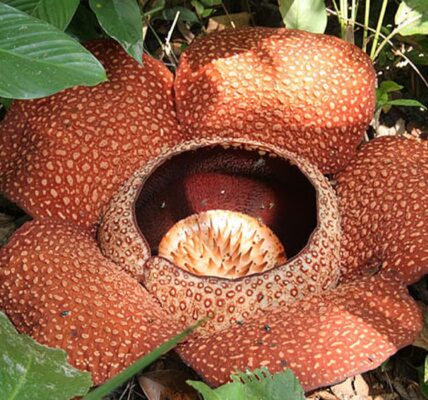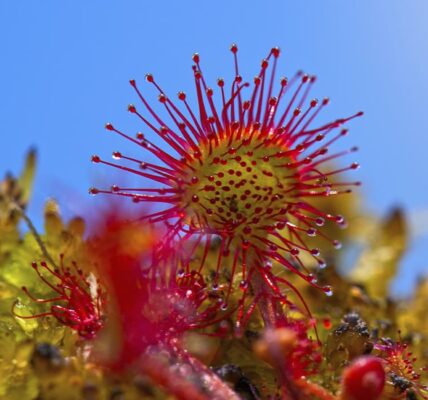Plants are the ultimate survivors, and even though they sometimes look unassuming, they are the true masters of planet Earth. No environment is too harsh for them, and wherever you may roam, you will find some amazing plans that find a way to survive. While some simply endure the scorching heat and bone-chilling cold, others find a way to thrive. They are all remarkable in their own right and explain people’s fascination with the plant kingdom. Plants use amazing strategies to adapt to some of the most challenging environments the planet can throw at them.
Alt: Plants adaptation
Desert Dwellers: Succulents and Xerophytes
Deserts are the most inhospitable environments to consider when picking a difficult place for plants to grow. Anyone who grows plants knows that water is the most important ingredient in the recipe for success, and in its absence, most plants will die out. However, a handful of plants have found ingenious ways to thrive in places where most of their peers would stand no chance. They can be divided into two main categories based on how they deal with the challenge.
Succulents, such as cacti and aloe vera, found a way around this puzzling problem by refining how they store water. A combination of stems and fleshy leaves enables them to store large quantities, so they survive through lengthy periods of drought. On the other hand, Xerophyte plants focus mainly on water retention by minimising the effects of transpiration. Some of the most ingenious plans even have a thick waxy coating covering their leaves to reduce heat absorption and reflect sunlight.
These are the five main adaptations found in plants that thrive in the desert:
- Fleshy leaves and stems to utilise water efficiently.
- Reduced leaf surfaces to minimise water loss through transpiration.
- Thick waxy cuticles on leaves reduce water loss, and reflective surfaces deflect sunlight.
- Deep root systems tap into underground water sources to access moisture.
- Bloom at night to reduce water loss through transpiration.
Arctic Pioneers: Adaptations in the Tundra
Heat is not the only challenge that plants need to overcome if they are to thrive against the odds and survive the most inhospitable environments. Plants in tundra have to deal with a combination of short growing season and extreme cold, and they have more than a few aces up their sleeves. Just like people, plans are stronger together, and some have adapted to create colonies of cushion plans. Instead of growing up products, they huddle together and cover large surfaces on the soil.
The adaptation is useful because creating a microclimate protects them from low temperatures and wins. A shallow root system effectively extracts nutrients from an otherwise thin layer of soil that barely covers the permafrost. Reducing heat and water loss is also paramount to survival, so some plans have developed fine hairs on their leaves. These adaptations allow plants to survive where other living creatures stand no chance.
Mangroves: Conquering the Coastal Challenges
Mangroves have spent much time in the spotlight in recent years because of their uncanny ability to store carbon. They are also amazing due to their ability to survive in harsh coastal environments and deal with tidal fluctuations, high salinity, and soils lacking oxygen. Stilt roots have emerged as the chief adaptation, as they firmly lock the mangroves in place and grant superior stability. These plans are also capable of excreting the excess salt they inadvertently absorb from the salty waters.

Nature has always been a source of inspiration for people when confronted with seemingly crushing odds. Online players know that the proverbial house edge will ensure the casino’s success at their expense, at least in the long run. Getting creative and taking advantage of anything that can help you level the playing field is essential to survive. Like the plants that thrive against the odds, free spins no deposit required keep your winnings UK when playing at licensed casinos. These bonuses will keep you afloat by boosting the bankroll, so it pays off to take advantage of them whenever possible.
Alpine Survivors: Life at High Altitudes
The alpine environments are characterised by high altitudes and extreme temperature fluctuations. They are not the best place for plants to grow, but these resilient life forms have found a way to succeed. Those who go on lengthy hikes in the wilderness will be pleasantly surprised to discover that alpine plants do just fine despite the harsh conditions. The mix of abilities and strategies evolved over thousands of years enables them to survive in such landscapes.
Anthocyanins are a chemical compound that these plants produce to protect themselves against UV radiation. These substances are incredibly beneficial to human beings, and they can improve cognition and neural protection, according to the latest anthocyanins studies. Due to the vastness of the alpine landscape and reduced competition, plans frequently prioritise reproduction. As a result, despite the short growing season, alpine plants cover vast areas in colourful blooms.
These are the five most important adaptations found in alpine plants.
- Create microclimates by growing close together to provide shelter from the wind.
- Adaptations to efficiently absorb minerals from thin mountain soils.
- Dwarfed growth forms to optimise resource use in nutrient-poor soils.
- Seeds with extended dormancy periods allow them to wait for the right conditions.
- Specialised root systems to access essential nutrients in the challenging alpine soils.
Halophytes: Flourishing in Salty Soils
Another category of plants that must deal with extreme temperatures is Halophytes, which thrive in high salt conditions. Instead of being killed by this substance that usually hurts regular plants, these resilient organisms thrive. They have developed an original way of dealing with excess salt, such as depositing salt in the leaves before shedding them. It is more common for plants to excrete excess salt through specially developed structures that mitigate toxicity.
Halophytes are not deterred by the wide fluctuations in soil salinity, as they have developed ways to use water efficiently. This happens mostly in coastal areas, where the influence of seas and oceans is decisive. However, similar adaptations have been noticed in plants that live in salt flats, which are inhospitable for most life forms. It took millions of years for them to accomplish these incredible deeds, but today, they feel right at home in this harsh environment.
In addition, we also can check out the main adaptations of plants in the toughest environments on Earth:
| Harsh Environment | Plant Adaptation |
| Deserts | Succulents and xerophytes with water storage adaptations |
| Tundra | Cushion plants, shallow root systems, and heat-trapping hairs |
| Coastal Areas | Stilt roots, prop roots, salt-excreting glands, and cuticles |
| Alpine Environments | Cold tolerance, microclimate creation, and UV radiation defence |
| Saline Soils | Salt accumulation, salt shedding, salt glands, and water-use efficiency |
Conclusion
It’s impossible not to be impressed by the uncanny ability of plans to adapt and even thrive in harsh environments. The desert’s blazing sun, the tundras’ blistering cold, or the mangroves’ brackish waters are no match for the toughest plans. The adaptations and strategies developed over millions of years have served them well in conquering these inhospitable places. Their example inspires people, especially today, when we struggle to find solutions to address climate change.




